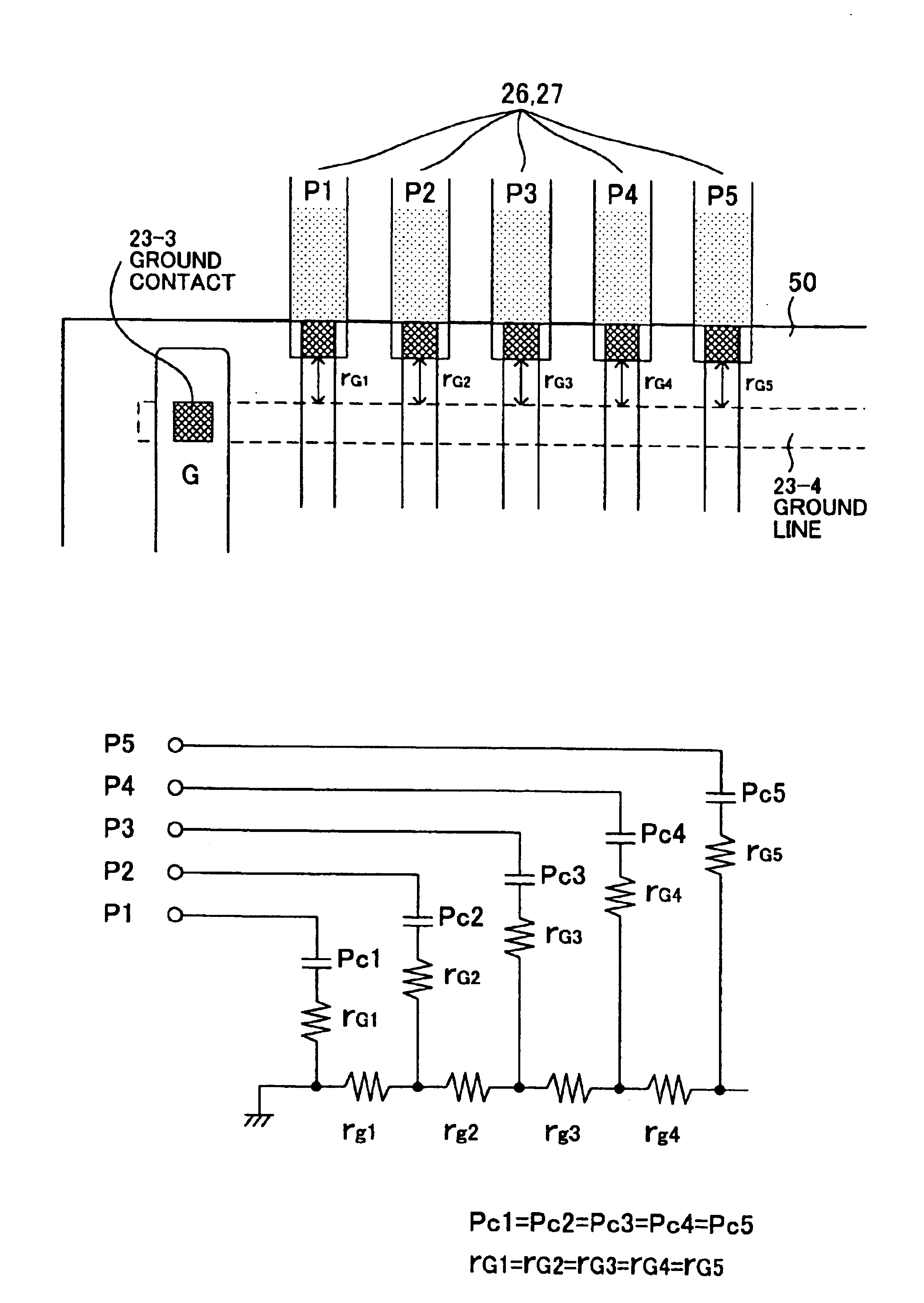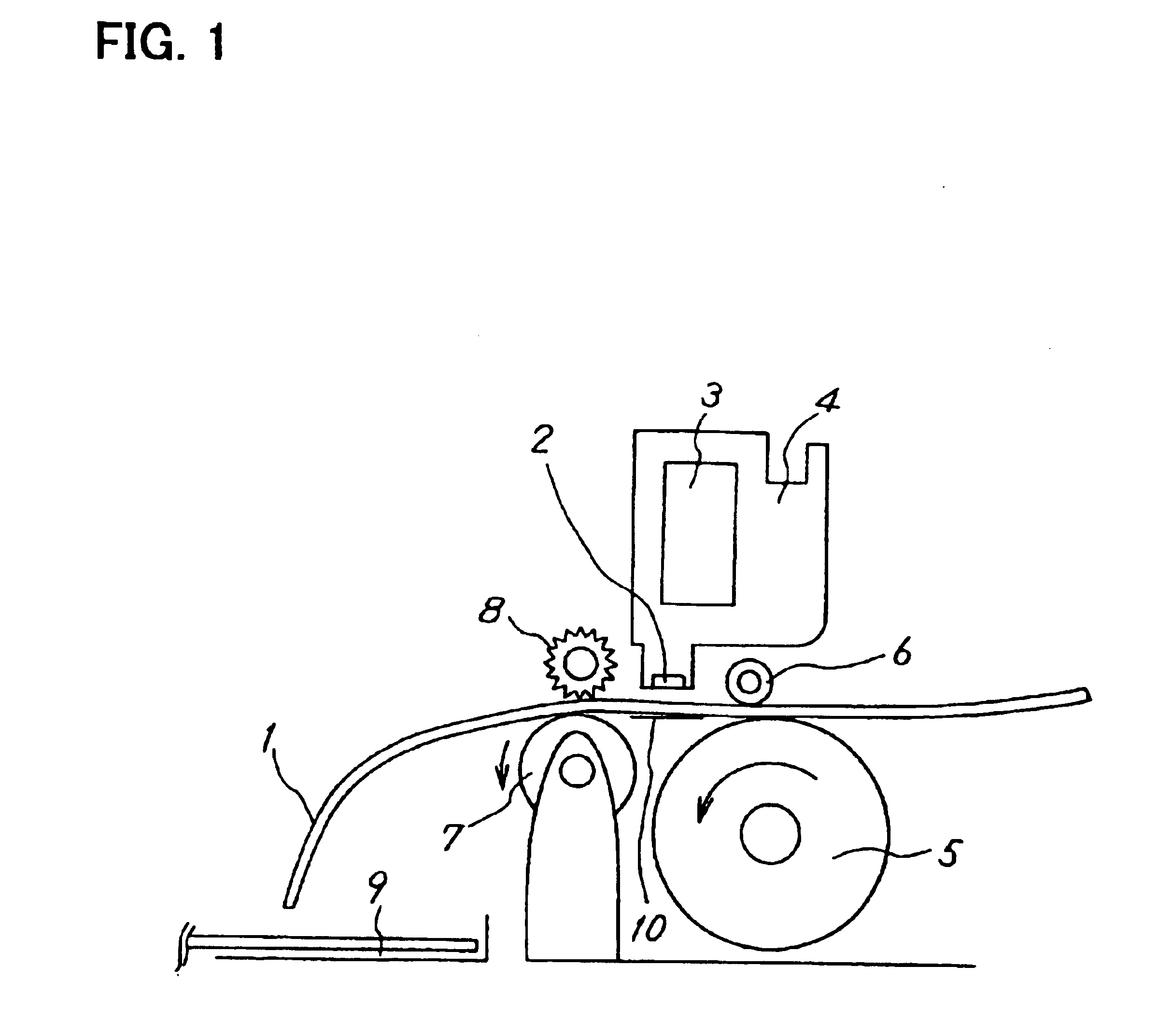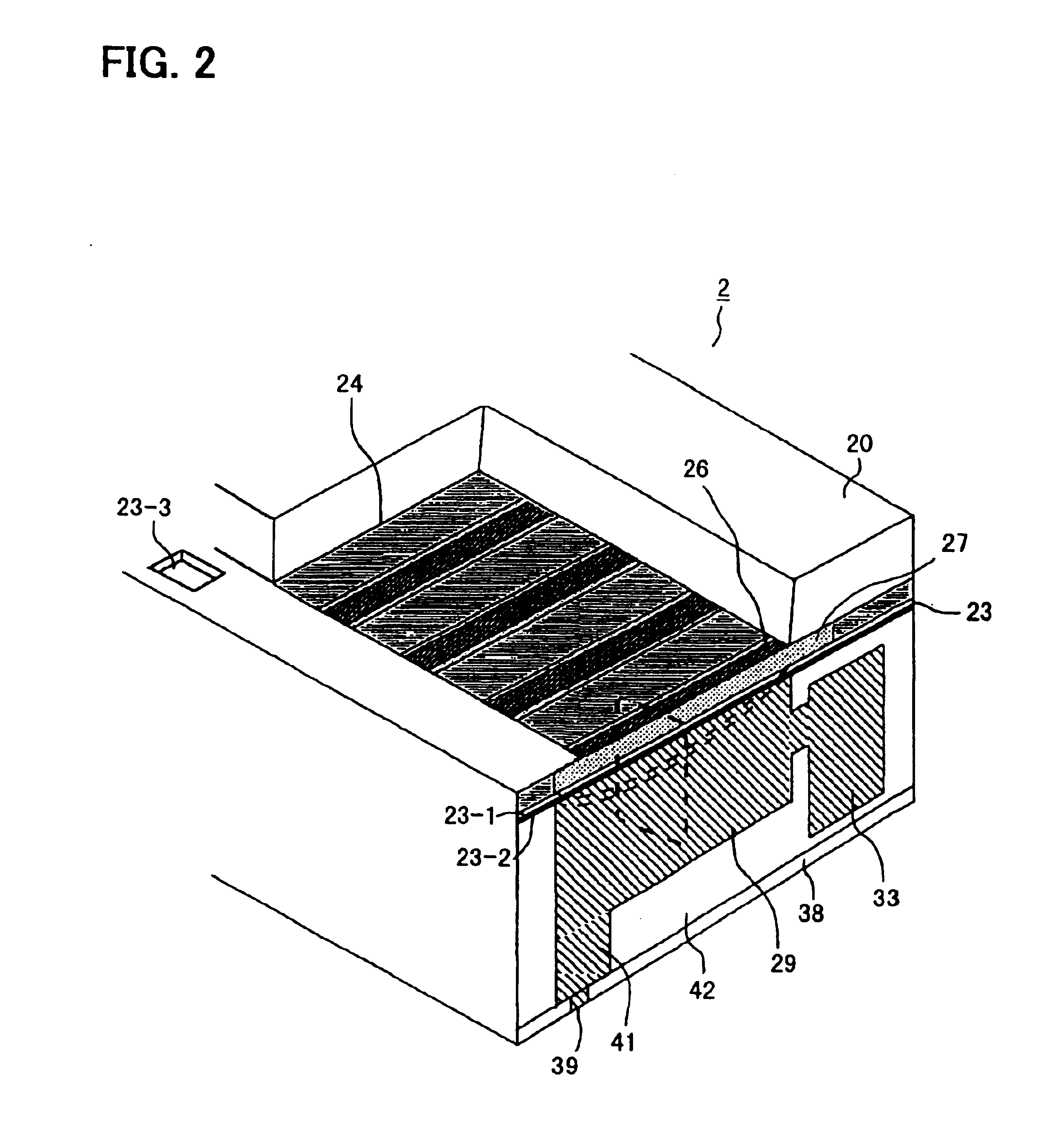Multi-nozzle ink jet head
- Summary
- Abstract
- Description
- Claims
- Application Information
AI Technical Summary
Benefits of technology
Problems solved by technology
Method used
Image
Examples
first embodiment
[First Embodiment]
[0078]FIG. 2 is a sectioned perspective view of the ink jet head 2 of a first embodiment of the present invention. Firstly, a description will be given of the constitution of the ink jet head 2 using FIG. 2. Broadly speaking, the ink jet head 2 is constituted from a substrate 20, a diaphragm 23, a main body part 42, a nozzle plate 38, ink ejection energy generating parts (hereinafter referred to as the ‘energy generating parts’) and so on.
[0079]The main body part 42 has a structure in which dry films are laminated as will be described later, and inside thereof are formed a plurality of pressure chambers 29 (ink chambers) and an ink channel 33 that acts as a supply channel for the ink. Moreover, the top part in the drawing of each pressure chamber 29 is made to be a free part, and an ink lead-through channel 41 is formed in the bottom surface of each pressure chamber 29.
[0080]Moreover, the nozzle plate 38 is disposed on the bottom surface in the drawing of the main ...
example 1
[0103]FIG. 6 stipulates the size, material and so on for each element in the specifications of a 150 dpi multi-nozzle head for which the minimum particle amount is made to be 1.5 pl and the driving frequency 20 kHz. The permitted waveform lag with this head is 50 ns. This head is the high-density head of FIG. 2 having a nozzle pitch of 170 μm, with the width of the pressure chambers 29 being made to be 100 μm and the length 700 μm, and the thickness of the piezos (piezoelectric elements) 27 being made to be 1 μm and the width 70 μm.
[0104]The capacitance of the piezos was made to be 208.152 pF, and Cr (resistivity 1.27 μΩ·m) was used as the common electrode layer 23-1. The number of nozzles was 64 pins, and a ground contact 23-3 was provided at each end of the row of nozzles. With an applied voltage of 20V, the thickness of the electrode layer 23-1 was changed, and the rise time CR of the driving waveform was calculated.
[0105]Note that a method was adopted in which an earth is led ou...
example 2
[0107]In a 150-dpi head of the constitution of FIG. 6, Ni (resistivity 0.724 μΩ·m) was used as the electrode layer 23-1. FIG. 9 shows calculation results of the resistance value, the waveform rise time 1-CR during 1-pin driving, and the waveform rise time all-CR during all-pin driving for thicknesses of the Ni from 0.1 to 0.35, and FIG. 10 is a graph of these results.
[0108]According to the results, with the Ni electrode layer, because the resistivity is lower than in the case of Cr, there are no electrical problems if the thickness of the electrode layer is about 0.18 μm.
[0109]Next, a method of manufacturing the ink jet head 2 having the constitution described above will be described using FIGS. 11 to 13.
[0110]To manufacture the ink jet recording head 2, firstly a substrate 20 is prepared as shown in FIG. 11(A). In the present example, a magnesium oxide (MgO) monocrystal of thickness 0.3 mm is used as the substrate 20.
[0111]An individual electrode layer 26 (hereinafter referred to m...
PUM
 Login to View More
Login to View More Abstract
Description
Claims
Application Information
 Login to View More
Login to View More - R&D
- Intellectual Property
- Life Sciences
- Materials
- Tech Scout
- Unparalleled Data Quality
- Higher Quality Content
- 60% Fewer Hallucinations
Browse by: Latest US Patents, China's latest patents, Technical Efficacy Thesaurus, Application Domain, Technology Topic, Popular Technical Reports.
© 2025 PatSnap. All rights reserved.Legal|Privacy policy|Modern Slavery Act Transparency Statement|Sitemap|About US| Contact US: help@patsnap.com



